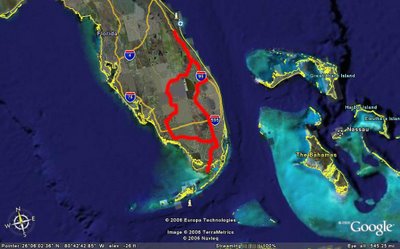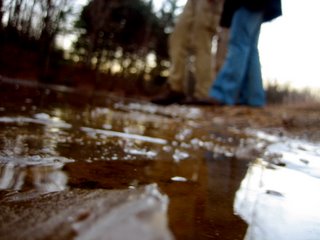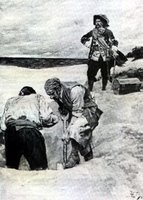







Greetings, one and all.
Last evening, under a full moon and the incandescent lights of DuPont's infamous Torian Room, two eager naturalists brought their work with the Caribbean Arhipelago to a close with a presentation of their findings from a recent 48-hour blitzkrieg on the Island of Puerto Rico. A healthy representation of community members, faculty, and students were in attendence to experience a powerpoint presentation and short documentary on the expedition.
During our university’s Thanksgiving holiday 2006, Patrician B.L. Padgett and Prefect-at-Large E.M. Keen traveled to the island of Puerto Rico, commissioned by the Biology and Geology Departments, the Center for Teaching, and the Sewanee Outing Program to circumnavigate the isle in pursuit of any and every natural history phenomena they may encounter. In exchange for this opportunity, the duo committed to presenting a multimedia report on the natural history of the island through research and the display of our findings, in the form of photographs, video, and material collections, to the general public upon return.
Although the dates of this trip were November 24-27, travel complications allowed the students only 47 hours in the field. However, this did not inhibit their productivity, since what time tas lost the pair recovered through less sleep and shortened and fewer meals. During those 47 hours, Padgett and Keen successfully explored exhaustively 4 different topographic regions of the island: the limestone rich beaches of the west and north coasts, eastern rainforest among the central Cordilleras, the unbelievable karst topography of the northeast, and salt flats and dune systems of the south coast. While in the field, they spent a significant portion of our time in each topographic region taking sand samples, investigating geologic phenomena, observing bird life, classifying general vegetative structures, and capturing insects, amphibians, and reptiles through direct collection methods.
At the end of our stay, the tired naturalists packaged and mailed their insect collection back to mainland America. The collection includes over 60 specimens from 24 different families of Insecta. Over 120 photographs were taken, along with 90 minutes of video. Other noteworthy accomplishments were the video documentary of 2 endangered and endemic bird species, the collection of 12 different sand samples from the perimeter of the island, and the photographic documentation of an endemic Anole and the endemic Coqui frog.
The students recorded the unfolding of their expedition with annotated maps, field notebooks and sketchbooks, and with the use of a Hi-8 Sony HandiCam and two Canon Powershot digital cameras. Further information about the expedition can be found by contacting Padgett at bpadgett@sewanee.edu or Keen at ekeen@sewanee.edu.
Plans are currently being made to further the pair's survey of island biogeography in the near future. Of course, the Curator will be kept posted of further developments.
Naturally,
E.M. Keen, Ltd. Prefect-at-Large





















































